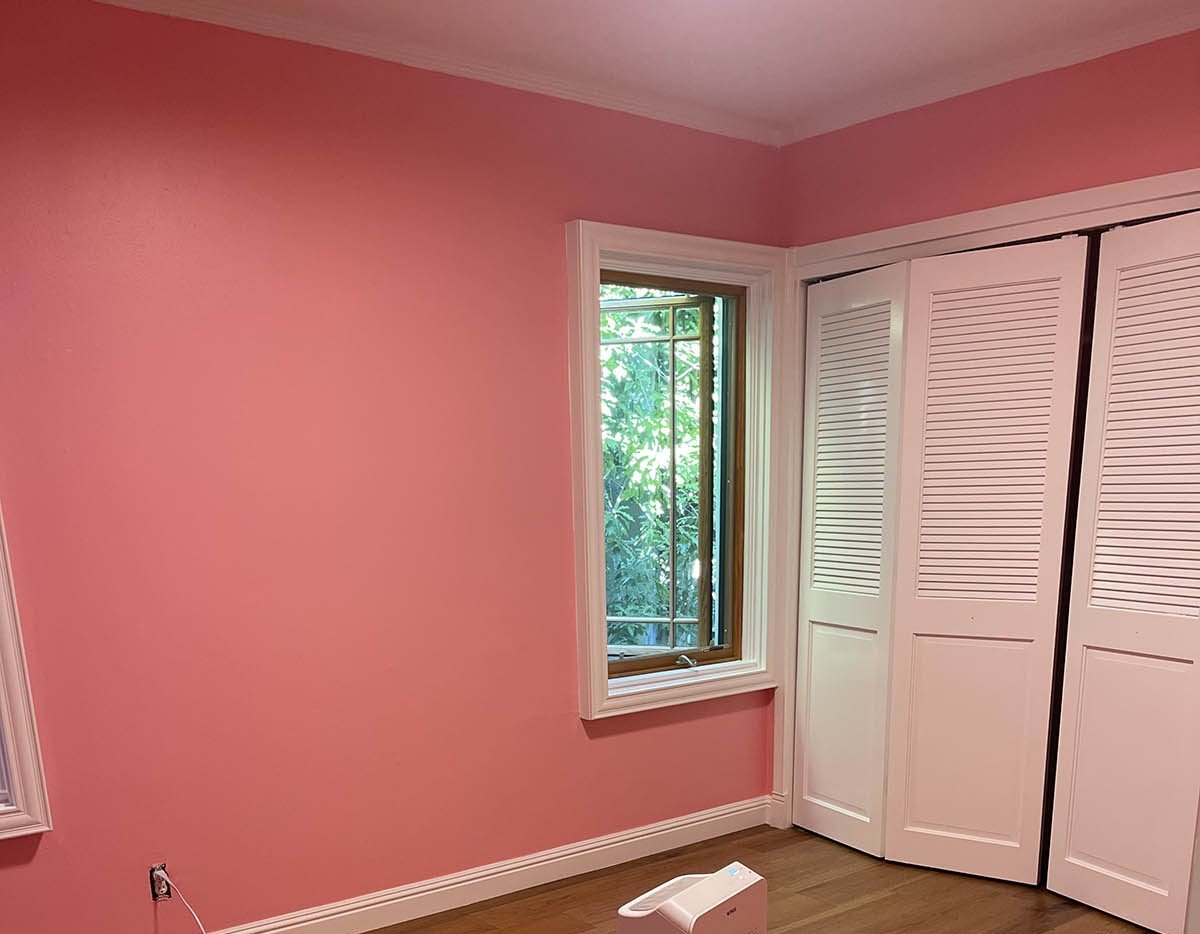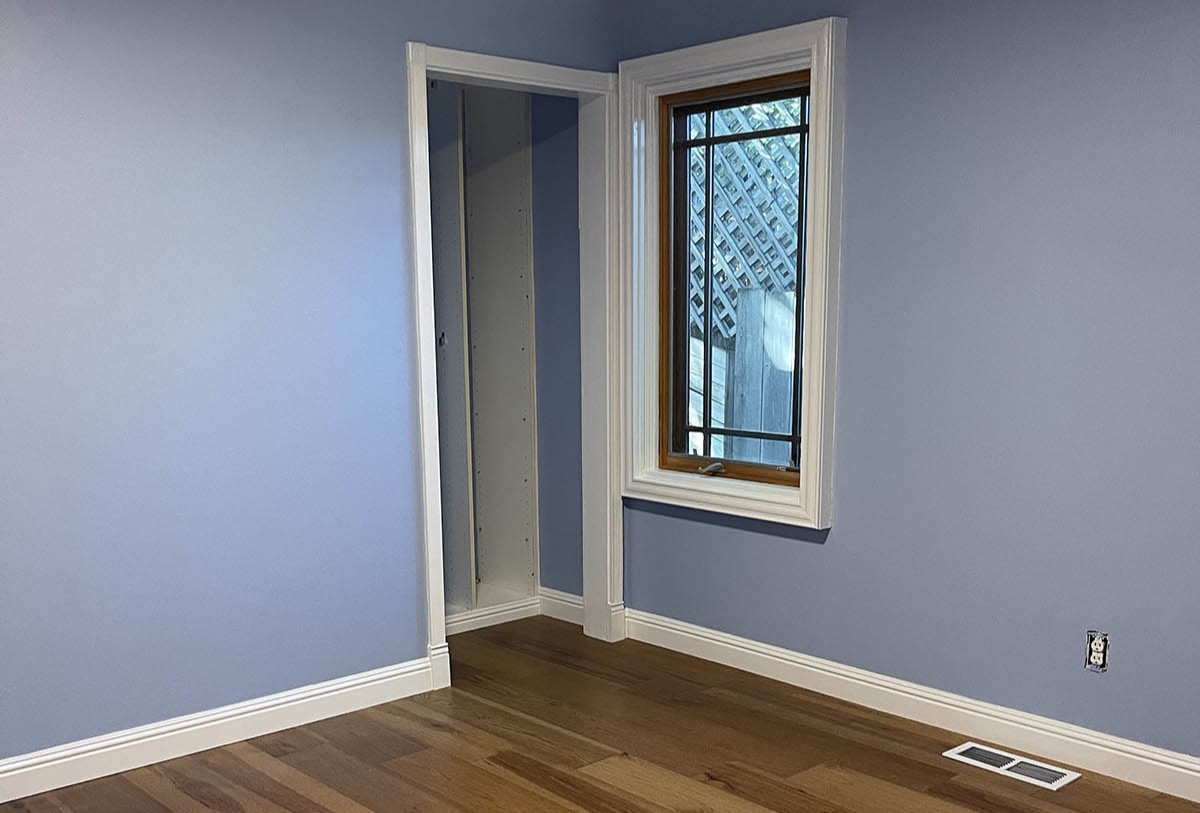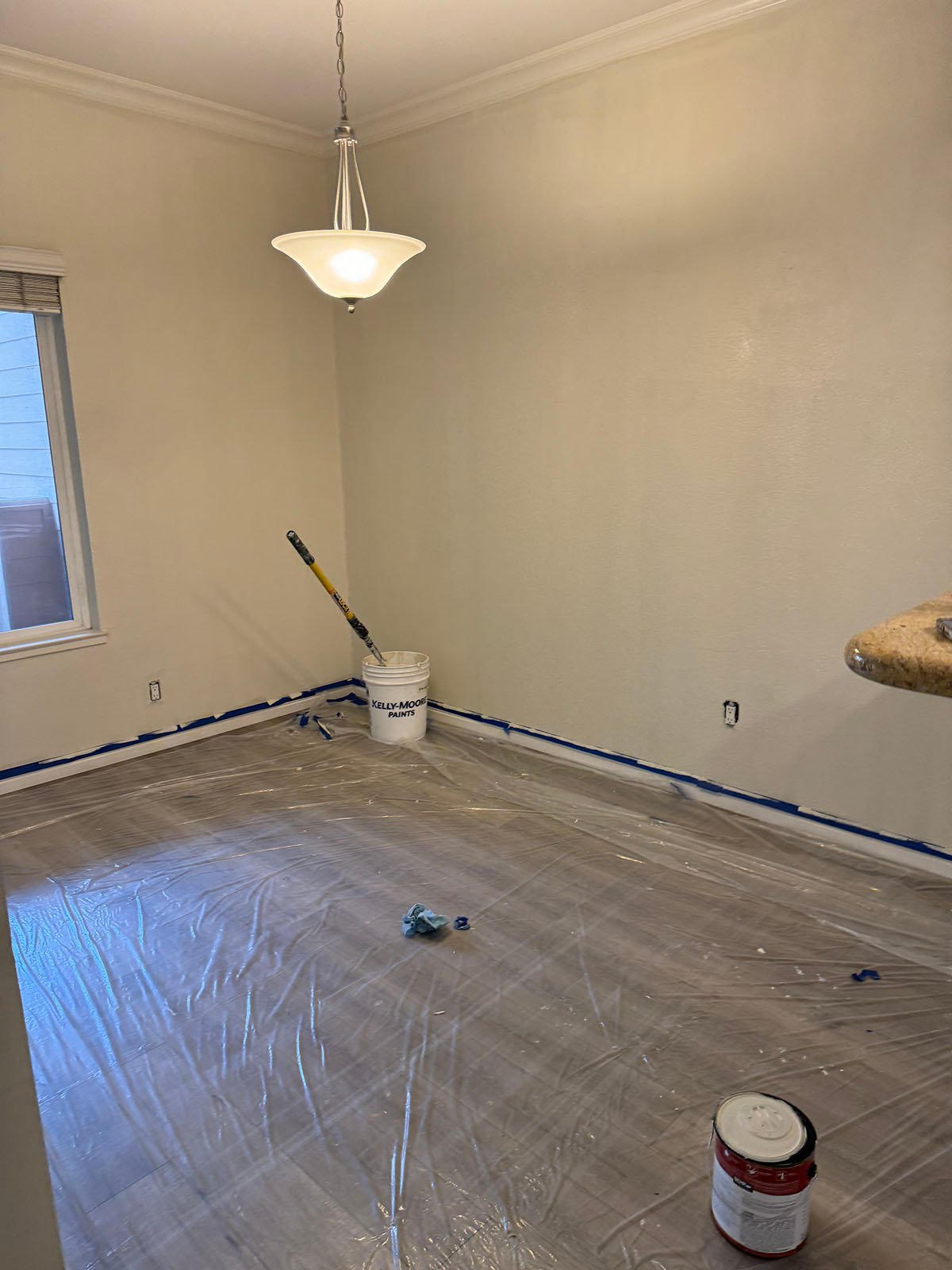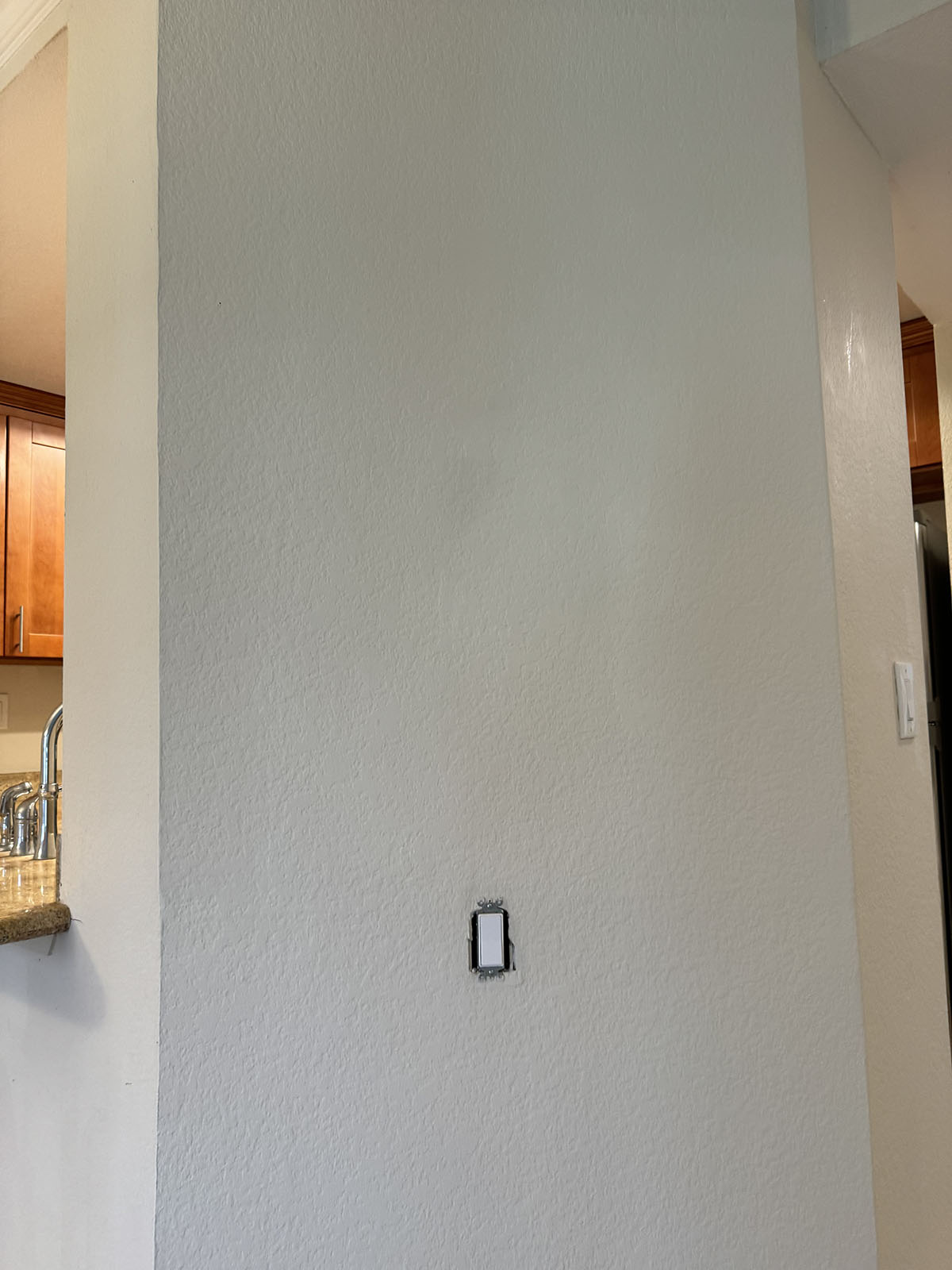
Painting the inside of your house isn’t just about picking colors and brushes. Timing matters. If you get it wrong, you deal with longer drying times, poor finish quality, and wasted effort. So let’s cut through the noise and focus on the real deal: what is the best time to paint house interior.
Choosing the best season to paint house interior can make the job easier, cleaner, and faster. It’s not just a matter of convenience. Seasonal conditions affect paint performance in ways most homeowners don’t realize.
Why Winter and Early Spring Often Work Best
- Dry air: Winter typically brings drier air, which helps paint dry more evenly and quickly. That reduces the risk of streaky surfaces.
- Less foot traffic: People spend more time indoors in winter but tend to entertain less. This means fewer interruptions and greater flexibility.
- Contractor availability: Painters are less busy during winter months. You might get better deals, more flexible scheduling, and more attention to detail.
- Steady indoor climate: Heating systems keep your home’s interior temperature consistent. Paint likes consistency. Sudden changes in heat or cold can interfere with how it dries.
- Natural downtime: The post-holiday months are usually quiet. That makes winter the perfect time to knock out big projects like painting.
The Worst Times to Paint Interior Walls
Some seasons may look promising but create more problems than they solve.
Why Summer and Rainy Seasons Can Be a Problem
- High humidity: Moisture in the air slows down paint drying, which can lead to uneven coverage.
- Busy schedules: Summer is filled with family vacations, outdoor projects, and distractions. It’s harder to stay focused on indoor tasks.
- Poor airflow: You might open windows to improve ventilation, but summer air is full of pollen, dust, and humidity. Not helpful when you’re trying to keep walls clean and dry.
- Storms and wet weather: In some regions, summer brings frequent thunderstorms. That can send humidity levels soaring, even indoors.
Time of Day Matters Too
Season is only part of the story. The time of day you choose to paint also plays a key role in how the job turns out.
What Is the Best Time to Paint House Interior
- Mid-morning to mid-afternoon: Start once your room temperature stabilizes after the chill of morning. Stop before late afternoon when the room starts to cool.
- Avoid early mornings: Cold air and moisture may still be lingering, which slows drying and can cause paint to look uneven.
- Avoid evenings and nights: Even if you work under good lighting, temperature drops and poor ventilation at night affect how paint sets.
Paint dries through a process called “curing,” which depends on air temperature, humidity, and circulation. Getting these wrong means repainting later.
Ready to Transform Your Space?
Don’t wait, your dream paint job is just a click away. Book your free estimate today!
What Conditions Make the Best Painting Environment
To get a smooth, even coat that lasts, you need the right setup. This goes beyond the calendar.
Optimal Interior Painting Conditions
- Temperature range: Between 60°F and 75°F is ideal for most interior paints. This range keeps paint flowing smoothly and helps it dry without cracks or bubbles.
- Humidity: Under 50% is optimal. Use a dehumidifier in the room if you’re painting during a humid season.
- Ventilation: Use fans or open interior doors. Move air around without letting dust or outdoor moisture in.
- Clean surfaces: Clean walls with a damp rag or mild detergent. Let them dry completely. Paint doesn’t bond well to dust, grease, or old residues.
- Good lighting: Use natural daylight where possible. Supplement with high-quality artificial lighting so you can see imperfections before the paint dries.
How to Plan Your Interior Painting Project
You can’t just wing it. Planning avoids rushed jobs, wasted paint, and rework. A well-timed plan helps you finish strong.
What to Do Before You Paint
- Pick the right time frame: Don’t squeeze painting between other commitments.
- Check the weather: Even for indoor jobs, extreme outdoor conditions can affect indoor temperature and humidity.
- Buy your supplies early: This includes paint, primer, rollers, brushes, tape, drop cloths, trays, and cleaner.
- Prep your space: Move furniture, protect flooring, remove switch plates and wall decor. Fill holes and sand them down. Clean walls thoroughly.
- Test your color: Paint a small area and see how it looks in your lighting. Colors can appear quite different under artificial light than they do in natural daylight.
What to Do During and After Painting
- Control airflow: Keep air moving without direct blasts on fresh paint. Cross-ventilation from open interior doors helps.
- Stick to recoat times: Most paints require 2-4 hours between coats, but read the label. Rushing can cause peeling or bubbling.
- Cure time: Paint might feel dry to the touch in a few hours, but full curing can take up to two weeks. Avoid heavy cleaning or moving furniture back too soon.
- Touch-ups: Once dry, inspect for thin spots, drips, or marks. Take care of them immediately while the paint is fresh.

Painting Tips for Specific Rooms
Every room in your house has its own challenges. The best time and method can vary slightly depending on where you’re painting.
Kitchen, Bathroom, and Laundry Rooms
- Ventilation: Proper ventilation is essential, as these areas are prone to moisture buildup. Paint when you can keep fans or HVAC running to maintain air flow.
- Use mildew-resistant paint: Especially in bathrooms and laundry areas. The right paint formula matters as much as the timing.
- Schedule on dry days: Avoid painting these spaces during high humidity or rainy weather.
Bedrooms and Living Rooms
- Paint during the day: You’ll be using artificial lighting at night which can cause you to miss spots.
- Let them cure longer: Since these are high-use rooms, give the paint a few extra days to cure before moving furniture or decorations back.
- Use low-VOC paint: Especially important in bedrooms where people sleep and air quality matters.
Hallways and Entryways
- Paint in off-hours: These areas get a lot of traffic. Try painting early in the day or while others are out.
- Fast-dry options: Consider fast-drying or one-coat paints so the space is usable again sooner.
Overlooked Details That Affect Timing
Some painting problems aren’t about weather or time of day. They’re about small oversights that can throw off your schedule.
Minor Issues That Can Ruin a Perfect Paint Job
- Old paint that hasn’t cured: If you’re painting over a fresh coat applied days ago, it might still be off-gassing and cause adhesion issues.
- Unexpected temperature shifts: Smart thermostats can cause the room to cool dramatically at night.
- Hidden humidity sources: Dishwashers, showers, or even nearby plants can bump up humidity unexpectedly.
- Inadequate prep: If you skipped sanding, priming, or washing walls, the timing won’t matter. The paint won’t stick properly.
Conclusion
Painting your house interior isn’t just about color and finish. Timing directly affects how that paint behaves, how it looks, and how long it lasts. Pick the right season, the right day, and the right conditions.
If you’ve been asking, what is the best time to paint house interior, now you’ve got an answer that’s practical. Winter and early spring offer the best conditions. Avoid high humidity and unstable temperatures. Stick to painting between mid-morning and early afternoon. Plan the project, prep thoroughly, and give the paint enough time to cure.
This isn’t about shortcuts. It’s about doing the job right the first time. That’s how you get lasting results and avoid repainting six months later. Timing isn’t just a detail. It’s the foundation of a clean, professional interior paint job.




